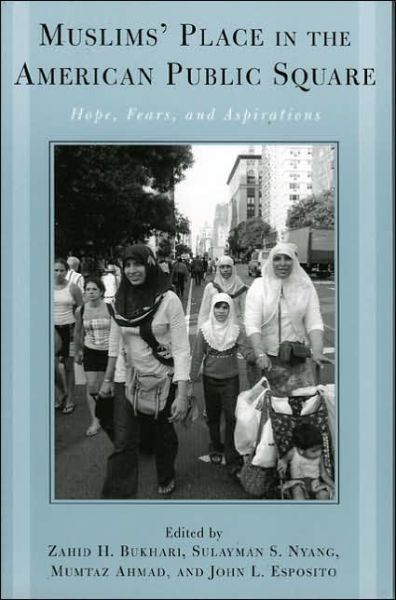 Book: By Zahid H. Bukhari (Editor), Sulayman S. Nyang (Editor), Mumtaz Ahmad (Editor), John L. Esposito (Editor), Taha Jaber Alalwani (Contribution by).
Book: By Zahid H. Bukhari (Editor), Sulayman S. Nyang (Editor), Mumtaz Ahmad (Editor), John L. Esposito (Editor), Taha Jaber Alalwani (Contribution by).
Overview
Once a year Muslims from around the world—representing a vast range of ethnicities, incomes, ages, and attitudes—perform the Hajj (pilgrimage) and converge in the holy city of Mecca in Saudi Arabia. Now, the global diversity of Muslims at the Hajj is almost repliacted in the United States: new immigrants, Muslims whose families have been here for generations, and converts are coming together, seeing what unites them and what issues they face together. Project MAPS (Muslims in the American Public Square) began in 1999 to provide much-needed information on this understudied and immensely diverse group of six million Americans. This first volume emerging from the project, Muslims’ Place in the American Public Square, shows where the American Muslim community fits into the American religious and civic landscape both before and after 9/11. Renowned scholars contribute theoretical, legal, historical, and sociological perspectives on how Muslims function in both their own institutions and others. For classes in religion or the social sciences, or for anyone interested in this increasingly significant community, Muslims’ Place in the American Public Square provides a current, balanced introduction.
Editorial Reviews
This edited collection presents a range of works that address the challenges and successes of Muslim communities in the U.S. The authors, who come from a variety of academic perspectives and backgrounds, provide a breadth of approaches and commentary on topics of worship, law, participation, and representation. An important addition to the examination of Muslims in the U.S. Highly recommended. John L. Esposito
At the dawn of the 21st century, the American Muslim community seemed well along on the path to mainstreaming in American society and institution building. 9/11 has challenged many of these successes and once again raised fundamental questions about Islam, the faith and identity of American Muslims, and their place in American society. Muslims’ Place in the American Public Square provides a much-needed perspective on American Muslims, their experience, and place in American religious history and in the public square.
The Author
Zahid H. Bukhari is the director of the MAPS Project: Muslims in American Public Square, and fellow of the Center for Muslim-Christian Understanding at Georgetown University. Sulayman S. Nyang teaches at the Department of African Studies, Howard University and is author Islam in the United States. Mumtaz Ahmad is editor of the journal Studies in Contemporary Islam and is professor of political science at Hampton University. John L. Esposito is university professor and director of the Center for Muslim-Christian Understanding: History and International Affairs, at the Edmund Walsh School of Foreign Service at Georgetown University.
Table of Contents
1 Foreword
2 Introduction Part
3 I: Theoretical Perspectives on the Muslim Experience in the U.S.
4 Toward a Fiqh for Minorities: Some Reflections
5 Living as a Muslim in a Pluralistic Society and State: Theory and Experience
6 Conceptual Discourse: Living as a Muslim in a Pluralistic Society Part
7 II: The Mainstreaming of American Muslims: Historical and Sociological Understanding
8 Muslims between the Jewish Example and the Black Experience: American Policy Implications
9 Muslims and the American Body Politics
10 Muslims as Partners in Interfaith Encounter Part
11 III: Islam and the Black Experience in America
12 Preliminary Reflections on Islam and Black Religion
13 Islam among African Americans: An Overview Chapter
14 The West African Paradox
15 IV: On Locating Muslims in the American Landscape: Demographical and Behavioral Aspects
16 Muslim Americans: A Demographic Report
17 The Mosque and the American Public Square
18 Governance and Leadership in Muslim Community Organizations
Product Details
ISBN-13: 9780759106130
Publisher: AltaMira Press
Publication date: 4/28/2004
Edition description: New Edition
Edition number: 1
Pages: 440
Sales rank: 1,111,240
Product dimensions: 5.58 (w) x 8.80 (h) x 1.06 (d)
